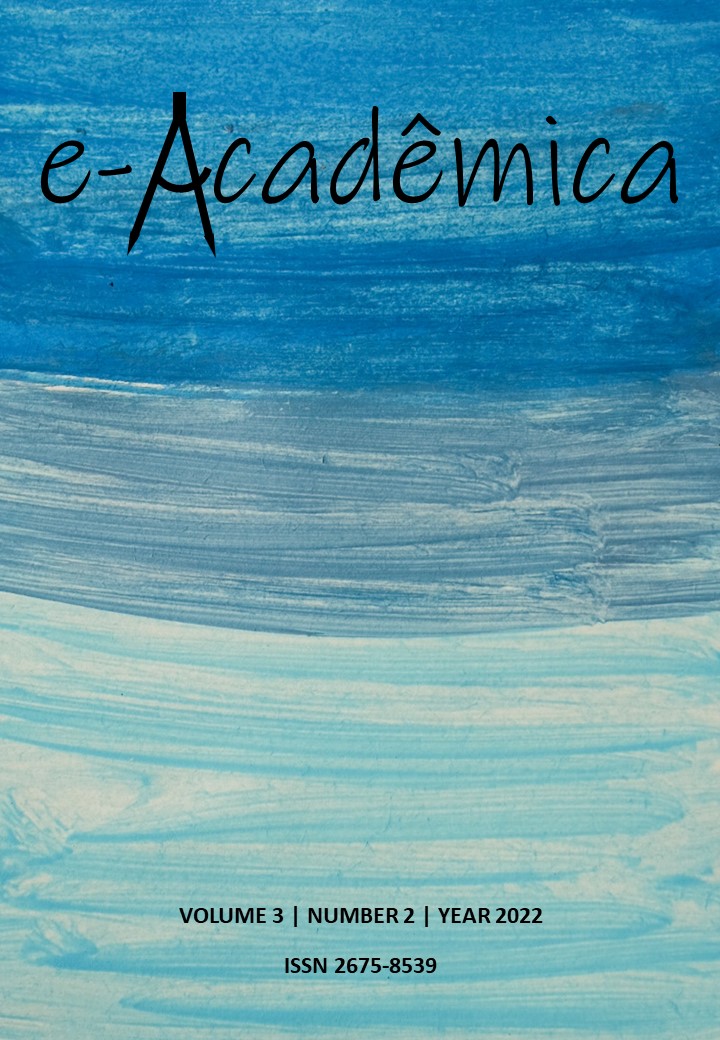Evaluation of Ivermectin Toxicity in the Plant Model of Allium cepa
DOI:
https://doi.org/10.52076/eacad-v3i2.205Keywords:
Toxicity; Ivermectin; Mutagenicity.Abstract
The present work aimed to verify the toxicity of Ivermectin in the plant model Allium cepa. To verify the toxicity, concentrations of 0.25 mg/ml, 0.5 mg/ml and 1.0 mg/ml of ivermectin were used, which were in contact with five onion bulbs respectively for each of the concentrations, including the negative control, carried out with distilled water. Soon after, the onions were placed in glass vials containing the final 8mL of their respective concentrations, being kept for three days in a dark environment at a temperature of approximately 25°C. After the three days, it was possible to measure the growth of the roots with the aid of a ruler and thus verify its toxicity. Through quantitative methods, it was observed that ivermectin was dose-dependent in inhibiting the growth of Allium cepa root. Inhibition was verified according to concentration growth. At the concentration of 0.25mg/ml, the inhibition was minimal, compared to the inhibition at 1.0mg/ml, which showed considerable toxic potential. Thus, it was found that the higher the concentration of ivermectin, the lower the growth of the root, evidencing its toxicological potential to the indiscriminate use of the drug.
References
Abbott Laboratórios. (2019). Bula do paciente revectina (ivermectina). img.drogasil. https://img.drogasil.com.br/raiadrogasil_bula/REVECTINA.pdf
Bezerra, C. M., & Oliveira, M. A. S. (2016). Avaliação da toxicidade, citotoxicidade e genotoxicidade do infuso de Malva-Santa (Plectranthus barbatus-Lamiaceae) sobre o ciclo celular de Allium cepa. Revista Eletrônica de Farmácia, 13(4), 220-228.
Brasil. (2020). Ministério da Saúde. Resolução da Diretoria Colegiada (RDC) 405/2020. https://www.in.gov.br/en/web/dou/-/resolucao-de-diretoria-colegiada-rdc-n-405-de-22-de-julho-de-2020-268192342
Cabrera, G. L., & Rodriguez, D. M. G. (1999). Genotoxicity of soil from farmland irrigated with wastewater using three plant bioassays. Mutation Research/Fundamental and Molecular Mechanisms of Mutagenesis, 426(2), 211-214.
Cuchiara, C. C., Borges, C. D., & Bobrowski, V. L. (2012). Sistema teste de Allium cepa como bioindicador da citogenotoxicidade de cursos d'água. Tecnologia Ciência Agropecuária, 6(1), 33-38.
Formiga, F. R., Leblanc, R., Rebouças, J. d. S., Farias, L. P., Oliveira, R. N., & Pena, L. (2020). Ivermectina: um medicamento premiado com atividade antiviral esperada contra COVID-19 (329th ed.). Jornal de liberação controlada., 758-761.
Frota, R. G., da Silva Amorim, Á., Carneiro, J. K. R., & Oliveira, M. A. S. (2019). Citotoxicidade, genotoxicidade e mutagenicidade da infusão de Plectranthus barbatus–Lamiaceae (malva-santa) avaliada pelo sistema teste Allium cepa. Revista de Ciências Médicas e Biológicas, 18(1), 67-72.
Heidary, F., & Gharebaghi, R. (2020). Ivermectina: uma revisão sistemática dos efeitos antivirais do regime complementar de COVID-19. Rev. The Journal of antibiotics, 73, 593-602.
Marques, L. L. M., Beneti, S. C., Pinzon, C., & Cardoso, F. A. R. (2022). Ivermectina como um possível tratamento para COVID-19: uma revisão dos protocolos de 2022. Brazilian Journal of Biology, 84.
Molento, M. B. (2020). COVID-19 e a corrida para a automedicação e autoadministração de ivermectina: uma palavra de cautela (10th ed.). One Health.
Pedroso, L. A., Binda, N. S., Teixeira, M. C., & Guimarães, A. G. (2020). Aspectos farmacológicos da ivermectina e seu potencial uso no tratamento da COVID-19. Brazilian Journal of Health and Pharmacy, 2(3), 11-20.
Person, O. C., Puga, M. E. D. S., Amaral, J. L. G., & Atallah, A. N. (2021). Intervenção com ivermectina para COVID-19 (SARS-CoV-2): sinopse baseada em evidências. Diagnóstico e Tratamento, 26, 27-34.
Ponte, A. R., de Aragão, C. R. B., Novaes, C. D. P., de Morais Trindade, G. B., Nascimento, K. I. M., Cardoso, L. R., & Guimarães, M. C. M. (2021). O uso da Ivermectina no tratamento da COVID-19: uma revisão integrativa da literatura. Brazilian Journal of Health Review, 4(2), 7546-7554.
Severino, A. J. (2017). Metodologia do trabalho científico. Cortez editora.
Silva, C. R., Monteiro, M. R., Caldeira-de-Araújo, A., & Bezerra, R. J. A. C. (2004). Absence of mutagenic and citotoxic potentiality of senna (Cassia angustifolia Vahl.) evaluated by microbiological tests. Revista Brasileira de Farmacognosia, 14, 1-2.
Tedesco, S., & Laughinghouse IV, H. (2012). Bioindicator of genotoxicity: the Allium cepa test. Environmental contamination, 137-156.
Zaha, A., Ferreira, H. B., & Passaglia, L. M. (2014). Biologia Molecular Básica-5. Artmed Editora.
Downloads
Published
How to Cite
Issue
Section
License
Copyright (c) 2022 Diolina Barros Pinheiro ; Jaira Pricila Silva do Nascimento Morais ; Thattynayra Melo da Silva; Wellington Rodrigues de Oliveira; Kátia da Conceição Machado

This work is licensed under a Creative Commons Attribution 4.0 International License.
Autores que publicam nesta revista concordam com os seguintes termos:
1) Autores mantém os direitos autorais e concedem à revista o direito de primeira publicação, com o trabalho simultaneamente licenciado sob a Licença Creative Commons Attribution que permite o compartilhamento do trabalho com reconhecimento da autoria e publicação inicial nesta revista.
2) Autores têm autorização para assumir contratos adicionais separadamente, para distribuição não-exclusiva da versão do trabalho publicada nesta revista (ex.: publicar em repositório institucional ou como capítulo de livro), com reconhecimento de autoria e publicação inicial nesta revista.
3) Autores têm permissão e são estimulados a publicar e distribuir seu trabalho online (ex.: em repositórios institucionais ou na sua página pessoal) a qualquer ponto antes ou durante o processo editorial, já que isso pode gerar alterações produtivas, bem como aumentar o impacto e a citação do trabalho publicado.










